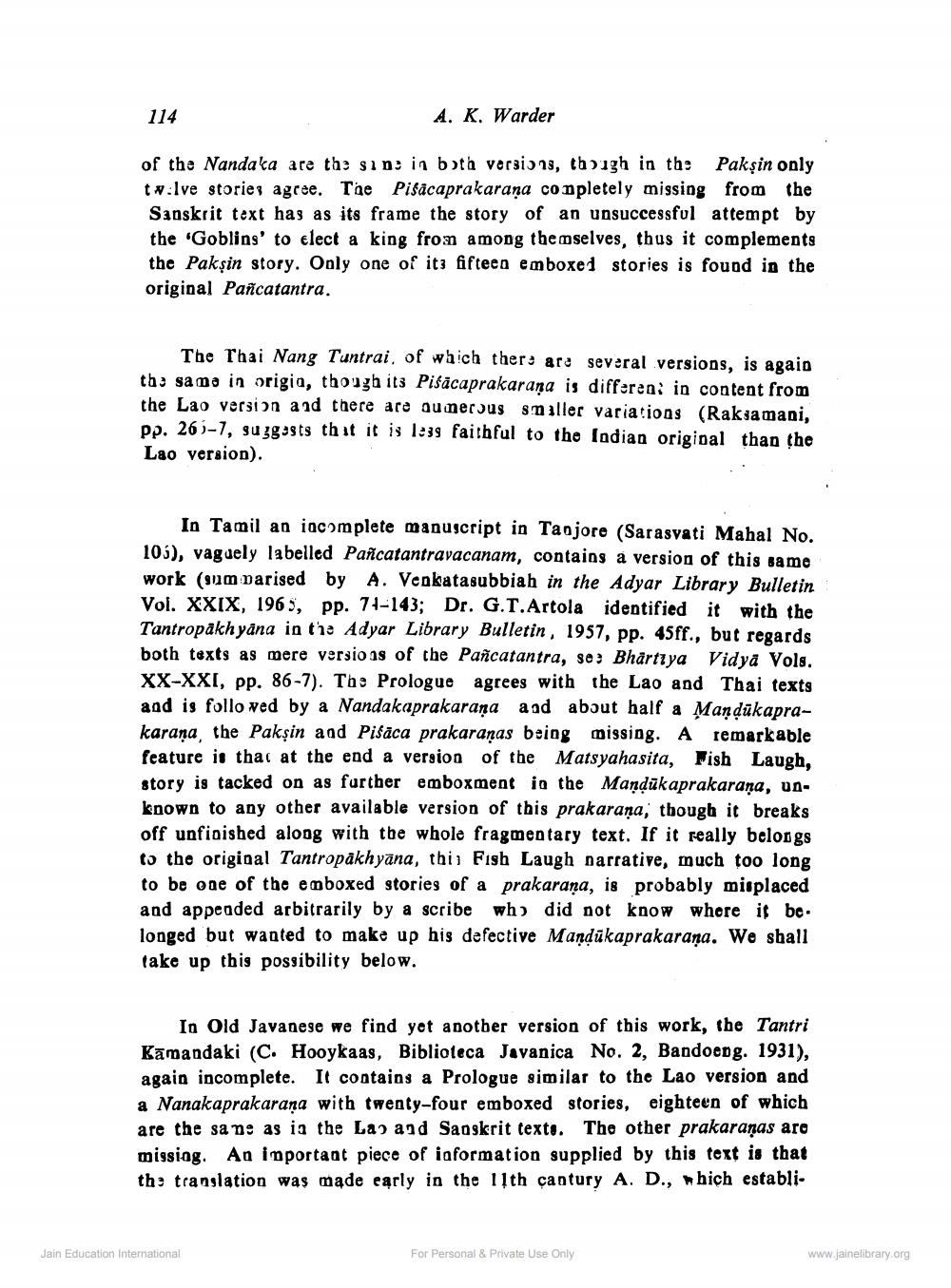________________
A. K. Warder
of the Nandaka are the sins in both versions, though in the Paksin only tw.lve stories agree. The Pisacaprakarana completely missing from the Sanskrit text has as its frame the story of an unsuccessful attempt by the 'Goblins' to elect a king from among themselves, thus it complements the Pakşin story. Only one of its fifteen emboxed stories is found in the original Pancatantra.
114
The Thai Nang Tantrai, of which thers are several versions, is again the same in origin, though its Pisacaprakarana is different in content from the Lao version and there are numerous smaller variations (Raksamani, pp. 26-7, suggests that it is less faithful to the Indian original than the
Lao version).
In Tamil an incomplete manuscript in Tanjore (Sarasvati Mahal No. 105), vaguely labelled Pañcatantravacanam, contains a version of this same work (summarised by A. Venkatasubbiah in the Adyar Library Bulletin Vol. XXIX, 1965, pp. 74-143; Dr. G.T.Artola identified it with the Tantropakhyana in the Adyar Library Bulletin, 1957, pp. 45ff., but regards both texts as mere versions of the Pañcatantra, se: Bhartiya Vidya Vols. XX-XXI, pp. 86-7). The Prologue agrees with the Lao and Thai texts. and is followed by a Nandakaprakarana and about half a Mandakaprakarana, the Pakṣin and Pisaca prakaranas being missing. A remarkable feature is that at the end a version of the Matsyahasita, Fish Laugh, story is tacked on as further emboxment in the Mandakaprakaraṇa, unknown to any other available version of this prakaraṇa, though it breaks. off unfinished along with the whole fragmentary text. If it really belongs. to the original Tantropakhyana, this Fish Laugh narrative, much too long to be one of the emboxed stories of a prakarana, is probably misplaced and appended arbitrarily by a scribe who did not know where it be longed but wanted to make up his defective Mandikaprakaraṇa. We shall take up this possibility below.
In Old Javanese we find yet another version of this work, the Tantri Kamandaki (C. Hooykaas, Biblioteca Javanica No. 2, Bandoeng. 1931), again incomplete. It contains a Prologue similar to the Lao version and a Nanakaprakarana with twenty-four emboxed stories, eighteen of which. are the same as in the Lao and Sanskrit texts. The other prakaranas are missing. An Important piece of information supplied by this text is that the translation was made early in the 11th cantury A. D., which establi
Jain Education International
For Personal & Private Use Only
www.jainelibrary.org




